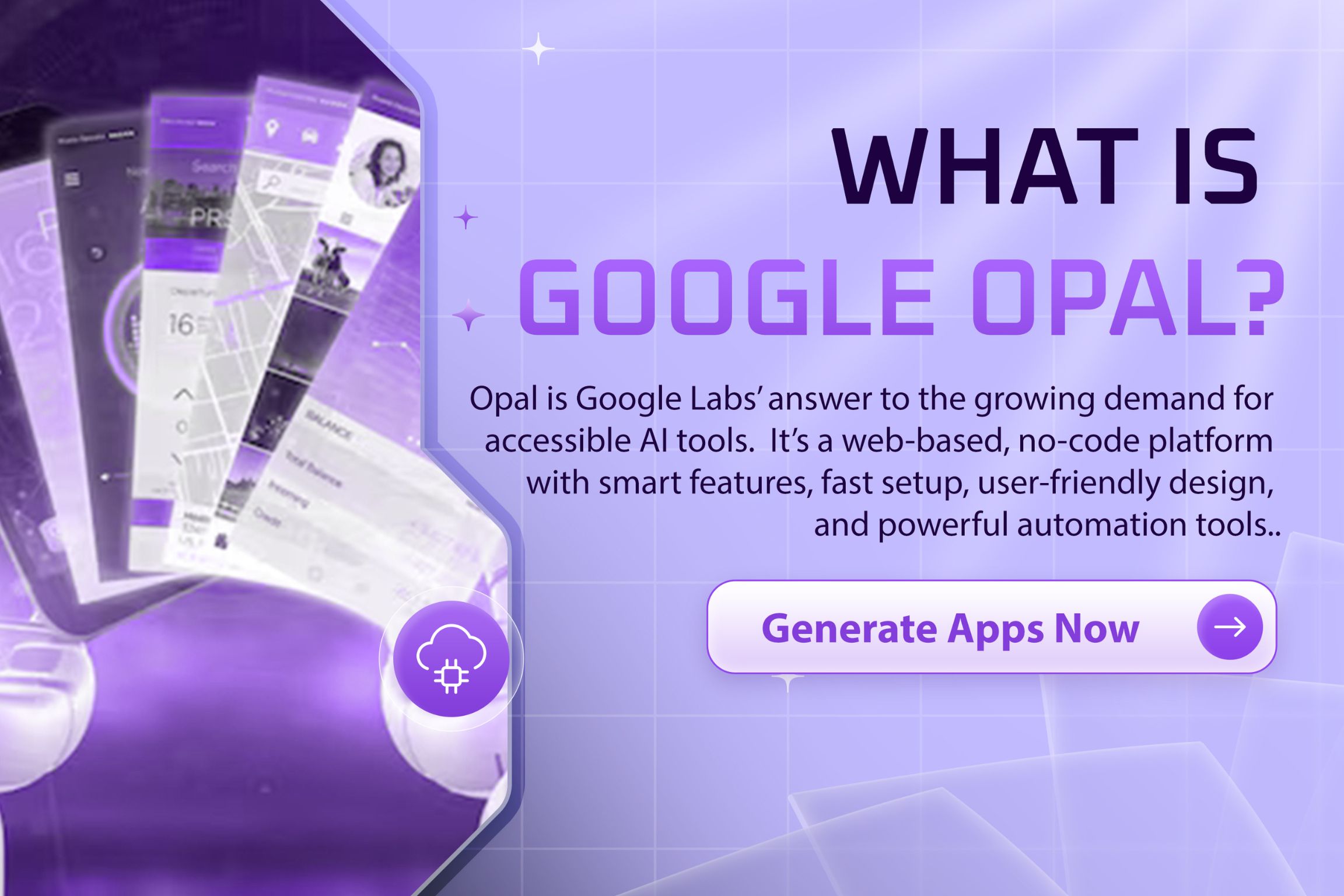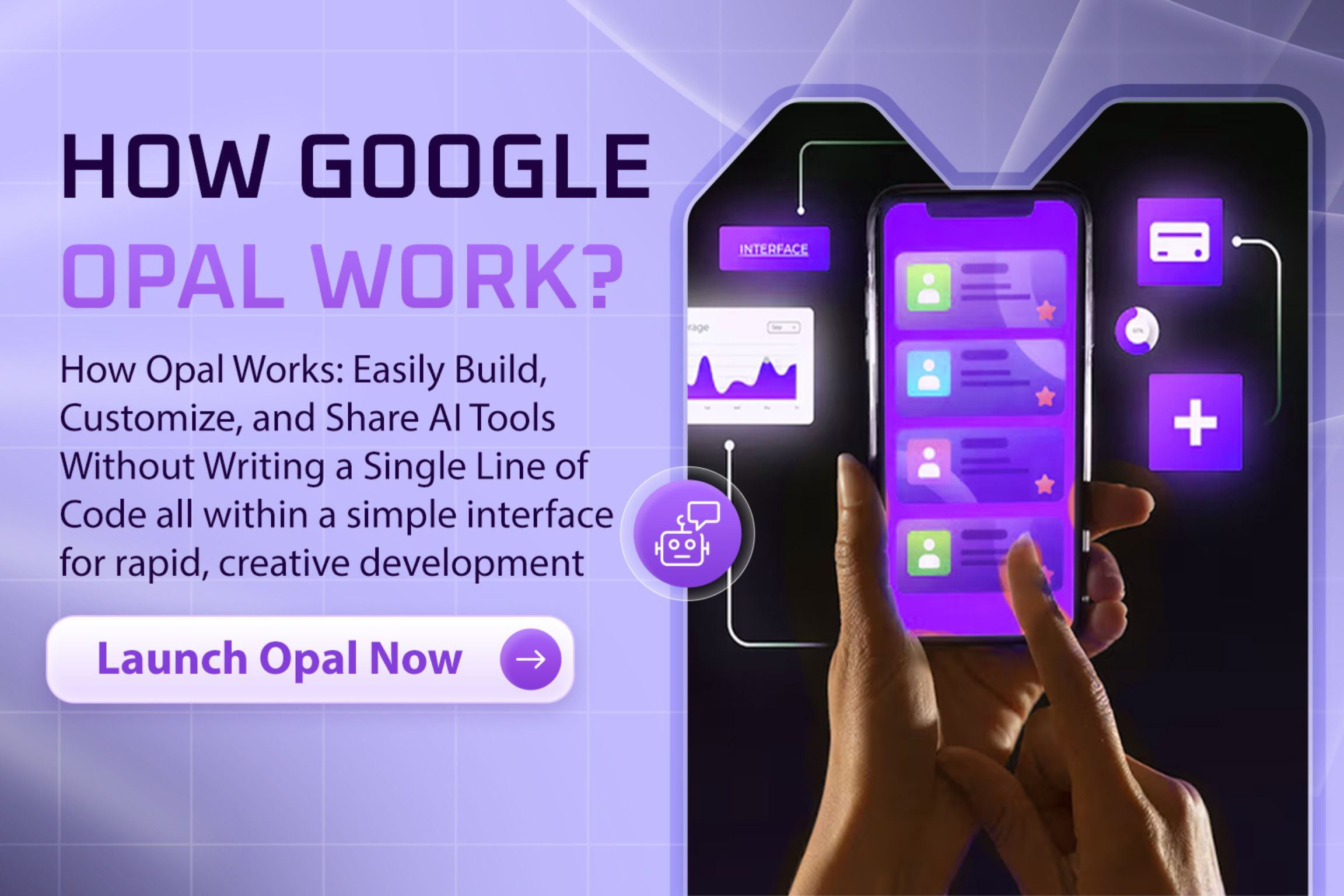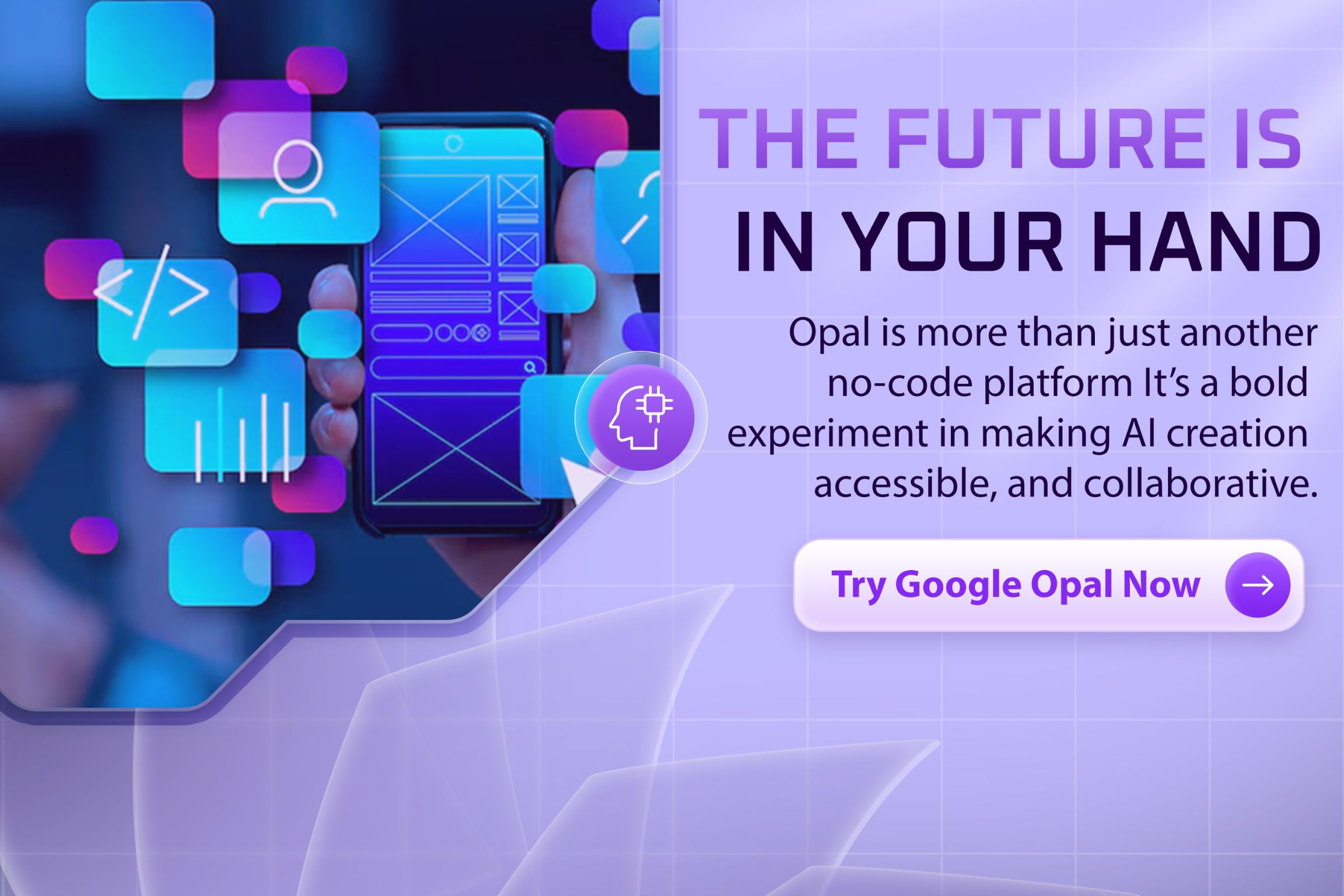Opal Is Here: Design and Share AI-Powered Mini-Apps in Minutes
Smash Code
Jul 28, 2025

Opal, launched on July 24, 2025, is Google’s new tool for creating and sharing AI-powered mini-apps in minutes. It uses plain language and a visual editor to turn ideas into interactive workflows, powered by Gemini 2.5 Pro. You can customise each step in real-time, making app creation accessible without coding. Currently in U.S.-only public beta, Opal excels at building simple front-end tools but lacks backend/API support.
Imagine you’re a developer with a brilliant idea for an AI-powered app. Maybe you’re a tech enthusiast who’s always wanted to automate a tedious workflow, or perhaps you’re simply a curious mind, eager to experiment with the latest in artificial intelligence.
In the past, turning that spark into a working application meant wrestling with code, wrangling APIs, and navigating a maze of technical hurdles. But what if you could bring your idea to life in minutes—no code required, just your imagination and a few simple prompts?
This is the promise of Opal, Google Labs’ brand-new experimental tool. Opal lets anyone—whether you’re a seasoned developer or a tech-loving tinkerer—design, build, and share powerful AI mini-apps using nothing more than natural language and a visual editor. Today, Opal launches in public beta, opening the doors to a new era of AI creation where the only limit is your creativity.
The Rise of No-Code AI: A New Era for Developers and Innovators
The world of software development is undergoing a seismic shift. No-code and low-code platforms are democratizing app creation, making it possible for millions to build sophisticated tools without writing a single line of code. In fact, by 2025, 70% of new applications developed by enterprises are expected to utilise low-code or no-code technologies—a dramatic leap from less than 25% in 2020.
This trend is fueled by the explosive growth of the no-code AI platforms market, which is projected to soar from $4.9 billion in 2024 to $24.8 billion by 2029, reflecting a staggering compound annual growth rate (CAGR) of 38.2%.
But it’s not just about numbers. The real story is about empowerment. Over 70% of no-code platforms are expected to integrate AI-powered features by 2025, enabling automated workflows and intelligent data analysis for everyone, not just professional developers. The number of “citizen developers”—business users creating applications without formal coding training—is projected to increase by at least 50% by 2025. This is the backdrop against which Opal emerges, promising to make AI app development as easy as describing your idea out loud.
What Is Opal? Google’s Vision for Effortless AI App Creation

Opal is Google Labs’ answer to the growing demand for accessible AI tools. It’s a web-based, no-code platform that lets users design and share AI-powered mini-apps—small, focused applications that chain together prompts, AI models, and tools—using simple natural language and a visual workflow editor.
Key Features at a Glance
- No-Code, Natural Language Development: Describe your app’s logic in plain English, and Opal translates your instructions into a visual workflow. No programming experience required.
- Visual Workflow Editor: Build, edit, and remix your mini-apps using a drag-and-drop interface or conversational commands. The editor represents your app as a series of cards on a virtual canvas, each card representing a step in your workflow.
- AI Model Integration: Opal leverages Google’s advanced AI models—like Gemini for text, Imagen for visuals, and Veo for video—to power your apps.
- Starter Templates and Demo Gallery: Jumpstart your creativity with a gallery of prebuilt templates for journaling, brainstorming, image generation, data summarisation, and more. Remix them to fit your needs or use them as inspiration.
- Instant Sharing: Once your app is ready, share it with others via a link. Anyone with a Google account can use your app immediately, making collaboration and feedback seamless.
- Fine-Grained Control: Tweak prompts, add new features, or call additional tools—all without ever seeing a line of code. You can edit visually or simply describe the change you want to make.
How Opal Works: From Idea to App in Minutes

Let’s break down the Opal experience in simple terms:
- Describe Your Idea: Start by telling Opal what you want your app to do. For example, “I want an app that summarises meeting notes and generates action items.”
- Visual Workflow Generation: Opal automatically creates a visual workflow, chaining together the necessary AI model calls and tools to achieve your goal.
- Edit and Refine: Use the visual editor to tweak each step. Want to add a new feature, like sending a summary to your email? Just describe it, and Opal updates the workflow.
- Test and Share: Run your app, see the results, and share it instantly with colleagues or friends. They can use it right away with their own Google accounts.
This process is designed to be intuitive and fast, making it ideal for rapid prototyping, proof-of-concept demos, and custom productivity tools.
Real-World Examples: What Can You Build with Opal?
Opal’s flexibility shines through its early use cases and starter templates. Here are just a few examples of what’s possible:
- Journaling and Brainstorming Apps: Capture daily thoughts or generate creative ideas with the help of AI-powered prompts.
- Image Generation Tools: Use Google’s Imagen model to create visuals from text descriptions.
- Data Summarisation: Build apps that analyse and summarise large datasets or meeting notes.
- Static Front-End Experiences: Create calculators, checklists, or portfolio templates—perfect for personal productivity or sharing with a team.
- Consumer-Focused Mini-Apps: Design interactive experiences, like simple video game prototypes or educational tools.
As Opal’s community grows, expect to see even more inventive mini-apps emerge, each one a testament to the power of accessible AI.
Opal in Context: How Does It Compare?
Opal enters a competitive landscape of no-code AI platforms, each with its own strengths. Platforms like BuildFire AI, Glide, Stack AI, Bubble, Softr, and FlutterFlow have already made waves by enabling users to build mobile and web apps without coding. What sets Opal apart is its deep integration with Google’s AI models and its focus on chaining together complex workflows using natural language. This makes it especially appealing for rapid prototyping and for users who want to experiment with the latest in generative AI.
The Bigger Picture: The Democratisation of AI
Opal’s launch is part of a much larger movement—the democratisation of AI. The global AI market is projected to expand from $371.71 billion in 2025 to over $2.4 trillion by 2032, with AI tools becoming increasingly accessible to non-experts . The democratisation of AI is expected to reach a market value of $487.7 billion by 2034, driven by platforms like Opal that lower the barriers to entry.
AI adoption is accelerating across industries, with 78% of organisations reporting AI use in 2024, up from 55% the previous year. The integration of AI into no-code platforms is expected to generate over $50 billion in enterprise efficiency gains by 2030. In this context, Opal is not just a tool—it’s a catalyst for a new wave of innovation, empowering creators, innovators, and doers to build the tools they imagine.
Conclusion: The Future Is in Your Hands

Opal is more than just another no-code platform. It’s a bold experiment in making AI creation accessible, intuitive, and collaborative. Whether you’re a developer looking to accelerate your workflow, a tech lover eager to prototype the next big thing, or a curious mind ready to explore the frontiers of AI, Opal invites you to bring your ideas to life—no code required.
As Opal enters public beta in the US, Google is calling on its community to shape the future of AI app development together. With powerful features, seamless sharing, and the backing of Google’s cutting-edge AI models, Opal is poised to become a cornerstone of the next generation of digital creativity.
So, as you ponder your next big idea, ask yourself: what will you build with Opal?